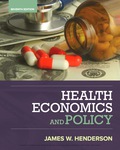1. Exercise 9.1 A study of 86 savings and loan associations in six northwestern states yielded the following cost function. C 2.38 (3.33) 0.006153Q (3.08) 0.000005359Q² (3.16) 19.2X₁ (2.96) where C = average operating expense ratio, expressed as a percentage and defined as total operating expense ($ million) divided by total assets ($ million) times 100 percent. Q = output; measured by total assets ($ million) X₁ = ratio of the number of branches to total assets ($ million) Note: The number in parentheses below each coefficient is its respective t-statistic. Which of the variable(s) is (are) statistically significant in explaining variations in the average operating expense ratio? (Hint: £0.025,70 = 1.99.) Check all that apply. Q2 What type of average cost-output relationship is suggested by these statistical results? ○ Cubic Linear Quadratic Based on these results, what can we conclude about the existence of economies or diseconomies of scale in savings and loan associations in the Northwest? ○ Economies of scale at all output levels Diseconomies of scale at all output levels Economies of scale at lower output levels and diseconomies of scale at higher output levels O Diseconomies of scale at lower output levels and economies of scale at higher output levels
1. Exercise 9.1 A study of 86 savings and loan associations in six northwestern states yielded the following cost function. C 2.38 (3.33) 0.006153Q (3.08) 0.000005359Q² (3.16) 19.2X₁ (2.96) where C = average operating expense ratio, expressed as a percentage and defined as total operating expense ($ million) divided by total assets ($ million) times 100 percent. Q = output; measured by total assets ($ million) X₁ = ratio of the number of branches to total assets ($ million) Note: The number in parentheses below each coefficient is its respective t-statistic. Which of the variable(s) is (are) statistically significant in explaining variations in the average operating expense ratio? (Hint: £0.025,70 = 1.99.) Check all that apply. Q2 What type of average cost-output relationship is suggested by these statistical results? ○ Cubic Linear Quadratic Based on these results, what can we conclude about the existence of economies or diseconomies of scale in savings and loan associations in the Northwest? ○ Economies of scale at all output levels Diseconomies of scale at all output levels Economies of scale at lower output levels and diseconomies of scale at higher output levels O Diseconomies of scale at lower output levels and economies of scale at higher output levels
Economics (MindTap Course List)
13th Edition
ISBN:9781337617383
Author:Roger A. Arnold
Publisher:Roger A. Arnold
Chapter21: Production And Costs
Section21.4: Costs Of Production: Total, Average, Marginal
Problem 1ST
Related questions
Question

Transcribed Image Text:1. Exercise 9.1
A study of 86 savings and loan associations in six northwestern states yielded the following cost function.
C
2.38
(3.33)
0.006153Q
(3.08)
0.000005359Q²
(3.16)
19.2X₁
(2.96)
where C = average operating expense ratio, expressed as a percentage and defined as total operating expense ($ million) divided by total assets ($
million) times 100 percent.
Q = output; measured by total assets ($ million)
X₁ = ratio of the number of branches to total assets ($ million)
Note: The number in parentheses below each coefficient is its respective t-statistic.
Which of the variable(s) is (are) statistically significant in explaining variations in the average operating expense ratio? (Hint: £0.025,70 = 1.99.) Check
all that apply.
Q2
What type of average cost-output relationship is suggested by these statistical results?
○ Cubic
Linear
Quadratic
Based on these results, what can we conclude about the existence of economies or diseconomies of scale in savings and loan associations in the
Northwest?
○ Economies of scale at all output levels
Diseconomies of scale at all output levels
Economies of scale at lower output levels and diseconomies of scale at higher output levels
O Diseconomies of scale at lower output levels and economies of scale at higher output levels
Expert Solution
This question has been solved!
Explore an expertly crafted, step-by-step solution for a thorough understanding of key concepts.
Step by step
Solved in 2 steps

Recommended textbooks for you

Economics (MindTap Course List)
Economics
ISBN:
9781337617383
Author:
Roger A. Arnold
Publisher:
Cengage Learning



Economics (MindTap Course List)
Economics
ISBN:
9781337617383
Author:
Roger A. Arnold
Publisher:
Cengage Learning



Managerial Economics: Applications, Strategies an…
Economics
ISBN:
9781305506381
Author:
James R. McGuigan, R. Charles Moyer, Frederick H.deB. Harris
Publisher:
Cengage Learning

Managerial Economics: A Problem Solving Approach
Economics
ISBN:
9781337106665
Author:
Luke M. Froeb, Brian T. McCann, Michael R. Ward, Mike Shor
Publisher:
Cengage Learning
